

 STUART JORDAN looks at the history of railways in Prussia.
STUART JORDAN looks at the history of railways in Prussia.
Prussia was the largest state in the 19th Century German Confederation, covering most of the northern part of modern Germany, as well as parts of Denmark, Poland, Russia, and Lithuania.
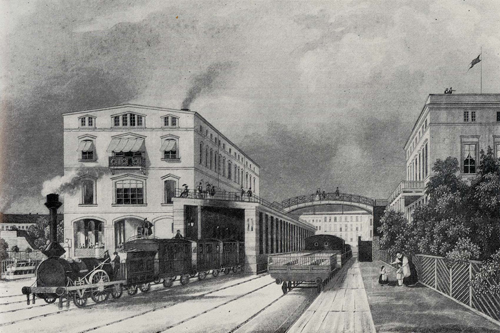
A steel engraving of Potsdamer Bahnhof in Berlin in 1843.
Railways came to Prussia in 1838 with the founding of the privately-owned Berlin-Potsdam Railway, after the Bavarian Ludwig Railway showed that German railways could be run economically. It was known colloquially as "Stammbahn", which roughly translates as "original line".
The first state-run Prussian railways appeared around 1850:
Ran from Rheine > Hamm > Warburg and from Welver (near Hamm) > Oberhausen.
Ran from Berlin > Danzig/Gdansk > Königsberg/Kaliningrad, which opened up Eastern Prussia for economic development.
Followed in 1875 by two more lines:
Ran from Berlin > Neubrandenburg > Stralsund
Ran from Berlin > Marienfelde > Zossen > Jüterbog, used for training (no pun intended) the Prussian Army in using railways for military purposes. It was opened for passenger services in 1888.
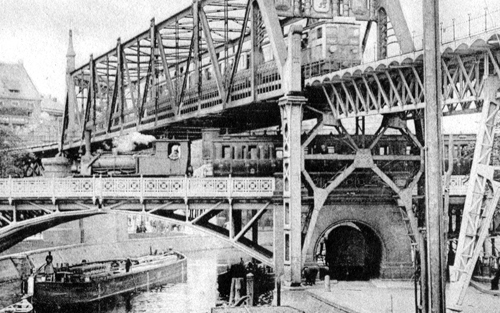
Detail from a postcard c.1900 showing a Prussian T3 locomotive shunting across the Landwehr Canal in Berlin.
Between the 1860s and 1880s many private commercial lines were annexed or bought by the state, to create the nationalised Königlich Preußische Staatseisenbahnen (K.P.St.E., "Royal Prussian State Railways"). Nationalisation was an effort to lower the price of, and ultimately standardise, freight charges. The railway was run as a profit making concern, and was a major source of income for the State – so much so that the Prussian State Railway became Germany's biggest company in 1907.
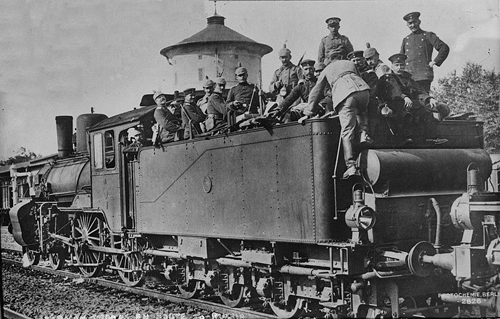
German troops are taken to the Russian Front in 1914 on the tender of a Prussian P4 Locomotive.
Although nationalised, the individual lines still acted independently and produced their own locomotives and rolling stock. Following Germany's defeat in World War I, The Prussian State Railway was merged in 1920 with the other German railways into the Deutsche Reichsbahn-Gesellschaft (DRG).

Generally the Royal Prussian State Railways is given the acronym 'KPEV', which stands for Königlich Preußische Eisenbahn-Verwaltung (Royal Prussian Railway Administration), which is displayed on stock under the badge of a crowned black eagle.
This is actually a misnomer, which seems to derive from an official in the Cologne division of the railway who created the design based on the coat of arms of the city of Cologne. It somehow spread onto all Prussian rolling stock in other divisions by mistake, and the name has stuck with railway enthusiasts.
For completeness, here are all the official names off the Prussian state railways chronologically:
1838 – 1896
Königlich Preußische Staatseisenbahnen (K.P.St.E., "Royal Prussian State Railways")
1896 - 1918
Königlich Preußische und Großherzoglich Hessische Staatseisenbahn (K.P.u.G.H.St.E., "Royal Prussian and Grand-Ducal Hessian State Railways")
1918 - 1920
Preußische Staatsbahn (P.St.B., "Prussian State Railways")


Fleischmann currently produce Prussian stock in both HO Scale and in N Scale.

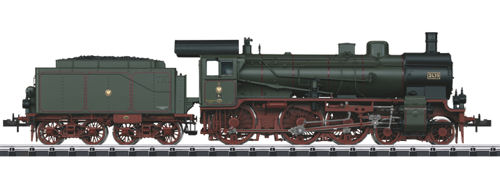
Trix/Minitrix currently produce one locomotive each in HO Scale and N Scale.

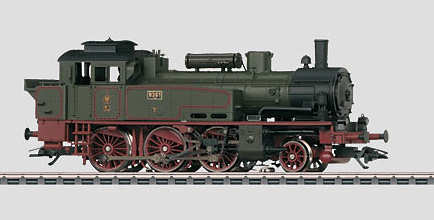
Marklin produce a small amount of Prussian stock in HO (3-Rail), Gauge 1, and Z Scale.